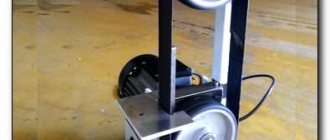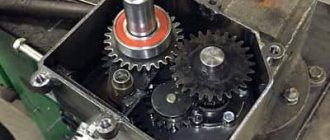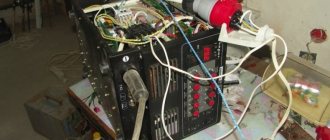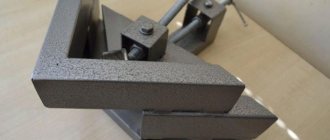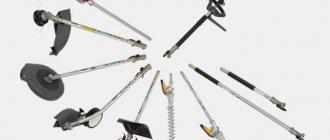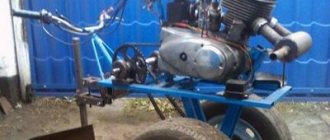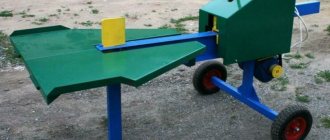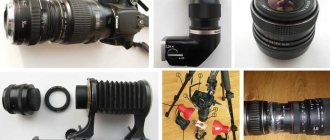Protect your eyes | 01/22/2016
Seemingly simple welding work, as a rule, requires a fairly professional and responsible approach. Because to perform high-quality and reliable work, you will need special tools. Such a tool can be an angle clamp for welding, which makes it possible to carry out welding work much easier and faster.
An angle clamp is a kind of universal clamp that holds the surfaces being processed during welding. Such a device firmly compresses the necessary elements at a certain angle and thereby makes the process of welding and processing materials more convenient . This is the first most important equipment for any welder, and it is impossible to do without it without causing damage to productivity and extreme inconvenience in work. Clamps can come in different sizes and shapes. Quick-release options are considered especially convenient. In general, for constant welding work, professionals recommend having a set of clamps of different configurations.
Corner clamp for carpentry and furniture assembly
This option is in many ways similar to the previous version of a homemade clamp for welding, but there are some differences in design, and the materials used are completely different.
Tools needed for work:
- band saw (or hand saw);
- drill;
- screwdriver
Let's start making a homemade product by making a clamp. To do this, we need a square piece of wood or plywood measuring 90x90 mm.
We mark and cut off one of the corners on a band saw, then cut it into two parts. As a result, we should get a triangular-shaped clamping block.
The second part of the square blank, which is shaped like a trapezoid, is used as a guide for the lead screw. We drill holes in both parts.
Using a chisel, cut out a seat for the nut in the guide. The end of the lead screw rests on a blind hole in the clamp itself.
Next you will need to make the base of the corner clamp. You can use plywood or a piece of board as a base. In this case, a piece of MDF is used as a basis.
We glue the guide to the base. We insert the lead screw into it. We screw a wooden handle onto the end of the screw.
After this, we saw off two blanks of the same size from a wooden block - the thrust walls. We attach them to the base of the homemade product.
In the corner of the base (between two stop walls) we install an additional stop made of a wooden block.
This device can be used for assembling furniture (for example, drawers), as well as for joining wooden pieces at an angle of 90 degrees (for example, when assembling photo frames).
You can also use a clamp to secure two workpieces for drilling coaxial holes.
We recommend screwing a corner on the bottom of the base with self-tapping screws so that you can secure the structure in a vice.
For more information on how to make a furniture clamp for gluing frames and other carpentry work, watch the video below.
Una idea muy útil para todo hombre - ¡Puede que necesites esto en garaje o taller!
Clamps
The clamp is considered a universal tool, as it can perform both installation and fixation functions. There is no single type of clamp, but this tool must be in the arsenal of any welder. Theoretically, welding without the use of clamps is quite possible, but this will come at the cost of lost time, inconvenience and, most importantly, poor quality.
The functionality of the clamp depends on whether the size of the jaw is adjustable. There are quick-clamping devices based on clamping using a cam mechanism. However, one clamp cannot fix absolutely any connection, so the welder must have several types of such tools at once. Clamps for welding work have one feature - they are made of metal. Similar carpenter's tools have plastic or wooden elements.
F-shaped
The basic design of an F-shaped clamp is quite simple, so you can often find homemade ones in a welder’s arsenal. It consists of a metal frame (tire) to which two jaws are attached. Some sponges are movable, while the other are immobile. In some cases, the fixed jaw is designed as a continuation of the bed. The movable jaw is driven by a screw with a handle.
A quick-release mechanism is available as an alternative. It replaces the movable jaw and allows you to fasten parts together more quickly. Typically, relatively large forces (up to 10,000 N) can be obtained using F-shaped clamps.
G-shaped
Such clamps are made in the form of a bracket in which both jaws remain motionless. The parts are secured by tightening the screw. This mechanism has one advantage - there is no backlash in the jaws. But in terms of the thickness of the parts being fastened, G-shaped clamps are very limited.
Corner
If necessary, fix parts at right angles using corner clamps. More complex devices allow you to adjust the angle of fixation. The components of such clamps are the body and the clamp. The clamp can be single-screw or double-screw. The pressing heels come into direct contact with the product.
End
Such devices are designed to fix the welded element to the end of the part. In appearance, they vaguely resemble G-shaped clamps, but differ in two additional clamping screws.
DIY F-shaped version
To make such a clamp, any scraps of profile metal are suitable. You will also need a nut, a screw, and some mounting bolts. The whole process is conventionally divided into two stages.
- The first step is to make the foundation. There are no special requirements for the profile, but as an example, you can consider a base made of a 25x60 mm pipe. You need to make three blanks with a length of 100, 200 and 300 mm. If you decide to make a clamp with fixed jaws, then the blanks are assembled in the shape of the letter “F” and a nut is welded to the end of the middle part. After making the screw with the clamp, the clamp will be ready.
- To make a clamp with a movable jaw, it is necessary to ensure free movement of the middle part along the base. Using a grinder and a welding machine, in any available way, make a mandrel for the middle part, which is loosely put on the long part of the base.
The clamp is made from a part of a screw with a plate at the end. For convenient use, you need to make a handle. The most trivial method of making a clamp with an adjustable jaw is described, but the movable jaw is not fixed. The fact is that when the screw rotates, a redistribution of forces occurs such that the middle part (the movable jaw) becomes slightly skewed on the base, which prevents it from moving. This type of clamp is considered self-locking.
Where can I buy
The clamps themselves are not a rare commodity, so there are usually no difficulties in purchasing them. Let us highlight just a few features of the purchase that may be of interest to the consumer.
First of all, clamps of various sizes can be found in specialized stores that sell tools. Indeed, there is no strict gradation for certain types of work, so welding clamps can also be purchased in the department of tools for carpentry.
However, it should be remembered that the tool must be made of metal. No wooden or plastic elements are allowed.
The jaws and threaded part must be strong, since when fixing metal products they bear a large load.
On the official website of the welding equipment manufacturer there is a section that allows you to organize the purchase of products online. If there are clamps in the catalog, you can buy them from an official distributor or directly from the manufacturer. This purchasing method is considered the most acceptable, since the proposed clamps are most likely adapted specifically for welding work.
You can also buy clamps in an online store not related to welding activities. In this case, the customer is at risk, since it is impossible to assess the quality of the mechanism and material from the description alone. The first two methods are the most acceptable.
Classification of devices
Usually they use a trivial classification, according to which all tools for welding are divided into installation and fastening. Installation tools help to adjust the makers with the required degree of accuracy. Classic devices include squares, stops, and templates.
Fastening devices provide fixation of parts in the installed position; these are clamps, ties or spacers.

